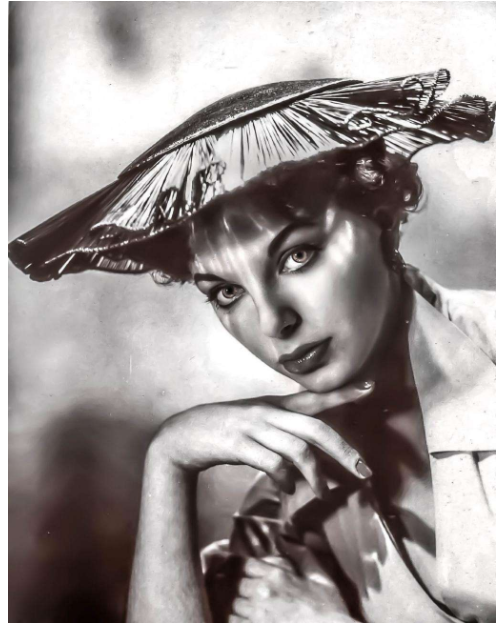本文是一篇英语论文,在这篇论文中,作者描述了她从威尔基·柯林斯的侦探小说《白衣女人》中发现的东西,这部长篇侦探小说的原型。侦探小说的创始人威尔基·柯林斯(Wilkie Collins)创造了这一亚类型的不同范例,这些范例对后来的小说家产生了深远的影响。
Chapter OneWilkie Collins as Father of the Detective Novel
Wilkie Collins and His Literary Achievements
Wilkie Collins (1824-1889), a noted novelist and playwright in the early Victorianage, is recognized as the forerunner of detective novel and sensation novel. Born inLondon, Collins moved to Italy with his parents when he was 12 years old and wentback to Britain three years later. Having served in a tea factory for three years, heresigned and began to study law at Lincoln Law Society and later worked as a lawyer.In 1847, Collins started his writing career, and his first work was a biography of hisfather, Memoirs of the Life of William Collins (1848). In 1850, Collins publishedAntonina, a novel set in Italy in the sixth century and originated from Collins’s earlyexperience. In 1851, Collins met Charles Dickens, and they became lifelong closefriends and partners. Since then, they edited Household Words jointly and Collinscontributed to the weekly All the Year Round run by Dickens. After that, the writingcareer of Collins met its turning point. From 1851 to 1859, Collins serialized most ofhis novels in the magazines edited by Dickens, including Rambles Beyond Railways(1851), Basil (1852), Hide and Seek (1854), After the Dark (1856), and so on.Nevertheless, those works enjoyed little reputation. In 1860, with the publication of TheWoman in White, Collins reached the pinnacle of his career. The novel proclaimed theemergence of sensation novel that is characterized by complex plots and the horrifyingatmosphere. In the next ten years, Collins successively published No Name and TheMoonstone, and the latter was ranked only second to The Woman in White. Collins haswritten 27 novels, 50 short stories, and at least 15 plays during his life. Most criticsaccept that Collins’s most significant contribution to the Victorian novel is hisinnovative contributions to sensation novel. After The Woman in White, Ellen Wood and Mary Braddon respectively wrote East Lynne (1861) and Lady Audley’s Secret(1862).
The Woman in White and the Related Literature Review
Wilkie Collins became a well-known writer with the publication of The Woman inWhite, which was initially regarded as a sensation novel, and eventually recognized acrime novel and finally a detective novel (The former focuses on depicting crime andthe latter on detective work). In the preliminary stage, The Woman in White was firstlyserialized in All Year Round run by Charles Dickens and well received by the readers,thus Collins was known to every household.
According to relevant literature, as record, the story of The Woman in White hastwo sources. One of the sources is Collins’s experience. One night after supper, Collinstook a walk with his brother. When they passed by a house, they heard a scream, then ayoung woman in white garments stormed out of the house and ran down the road. Herwhite coat sparkled under the moonlight. Collins caught the woman and soondisappeared with her into the dark. According to the memoir written by Collins’ssister-in-law, the woman is Caroline Graves, who became Collins’s lifelong companion after that encounter.
The other source is from a record of a case concerning the inheritance of propertyin France. According to Wilkie Collins and The Woman in White written by Clyde K.Hyde, the case was recorded in a book accidentally bought by Collins. That is also aproof that Collins draws materials from real life.
Chapter TwoSome Specific Features of Collins’s Detective Novel
The Mode of “Co-Detectives”
In The Woman in White, there are two detectives. One is Hartright and the other isMarian. Hartright detects the case by reading testimonies and letters of other involvedpeople. Marian collects evidence by eavesdropping. From the view of the balance ofpower between men and women, she also acts as a foil of Hartright. Hartright andMarian represent two different methods of detection, namely, visiting witnesses andeavesdropping for gaining evidence.
Umberto Eco distinguishes scientific research with detection. The target ofscientific research is to explore the law of the universe, but the detective’s responsibilityis to find out the cause of a specific event according to its consequence. In this sense,scientific research is about the universe and detection about the “text”, and the text isconstituted by signs. Creating a text is to encode, thus the author becomes a “transmitter”. Reading the text is to decode, thus the reader becomes a “receiver”. Theprocess of reading a text is a conversation between author and reader. Similarly, a seriesof unsolved mysteries can be considered text, so “detection” is equal to “text decoding”.“Detection means selecting and grouping signifiers and assigning various signifieds tothem” (Hühn 456). The formation of text hinges on the reading of it. Just like thedetection of a case, mysteries finally become distinct through reasoning (Eco).
The narrative strategy makes Hartright the reader of other characters’ narratives.Consequently, in this novel, “detective as reader” has two implications. One is thereader of testimonies, and the other is the reader of the process of crime.
The Subplot of “Searching for Identity"
Human beings are born with the natural instinct of exploring the mystery, whichexplains why detective fiction is well received by readers. With the hundreds of yearsof development, the common paradigm of detective novel has been fixed to“crime-detection-punishment”. Since there is a crime, there must be one or more thanone criminals. The task of the detective is finding out the criminal. Therefore, searchingfor identity is an essential motif of detective fiction. In The Woman in White, in additionto searching out criminals and their motives, a salient peculiarity of this novel is thatalmost every main character has secrets on their identities.
In The Woman in White, Fosco has multiple identities. Seemingly, he is a foreignerwith an eminent position, but in fact he is a member of a secret society in Italy. Also,for those British in the novel, he is an “Other” surveying their behaviors from the eyesof another ideology.
Fosco is immensely fat, but his pets are all small animals such as mice and birds,which are easy to tame. He cares about his pets very much and takes them with himeverywhere. Even when he flees from England, he also takes his mice in his luggage.But in contrast, he imprisons an innocent woman for his own interests withouthesitation.

Chapter Three Collins’s Contributions and Legacy on the DetectiveFiction................... 36
Collins and His Counterpart Edgar Allan Poe.......................................36
Collins and His Successor Arthur Conan Doyle................................... 44
Collins’s Contributions and Legacy on the Detective Fiction.............. 48
Conclusion.............51
Chapter ThreeCollins’s Contributions and Legacy on the Detective Fiction
Collins and His Counterpart Edgar Allan Poe
Edgar Allan Poe is the first person who regards short story as an independentliterary form. In The Philosophy of Composition, Poe expresses his ideas of literarycreation. He thinks that writers should cut down the length of their works, that is, thework should be fairly short. “If any literary work is too long to be read at one sitting, wemust be content to dispense with the immensely important effect derivable from unityof impression” (Poe “The Philosophy” 3). Writers can fully demonstrate their creationintention in limited space, thereby impressing readers and controlling their emotions. “Itis clear that the brevity of must be in direct ratio of the intensity of the intended effect”(Poe “The Philosophy” 4). Lengthy and tedious works distract writers’ attention, sotheir works cannot achieve intended effect, in other words, “the unity of effect”. Poe notonly pays attention to experiment his “creation philosophy”, but he also combines hisphilosophy with readers’ reading psychology. He points out that compared with thenovel, one of the advantages of short story is that it enables readers to finish the readingonce and for all, thus ensures against the damage of the unity of literary works due tothe interruption of reading. In a brief story, writers can better put their intentions into practice and readers will spend more energy to follow them. Therefore, out of suchcreative concept, except for the poetry, all of Poe’s works are short stories. Hisdetective fiction is not an exception.

Conclusion
In this thesis, the present author delineates what she found from Wilkie Collins’sdetective novel, The Woman in White, the prototype of the full-length detective novel.Wilkie Collins, the initiator of the detective novel, creates different paradigms of thissub-genre and those paradigms exert a far-reaching influence on later novelists.
Collins sets paradigms for the detective novel in The Woman in White.
In characterization, this novel characterizes unique images of detective andcriminal that break the convention of previous works such as Poe’s detective stories.Collins adopts the mode of “co-detectives”. Hartright and Marian both play the role ofdetective, but the two have different methods. Todorov analogizes the reader todetective and the criminal to author. Hartright carries out the investigation by readingother characters’ testimonies and reading the whole crime process “written” bycriminals. Marian, the other detective, mainly obtaining evidence by eavesdropping.But due to the social convention, she cannot make filed investigation like Hartright does.In this sense, Marian can also be seen as a foil.
In the subplot, searching for identity is one of the motifs of detective fiction. In TheWoman in White, in addition to finding out criminals and their motives, a salientpeculiarity of this novel is that almost every main character has hidden their identities.Revealing their hidden identities is essential in finding the truth.
reference(omitted)
